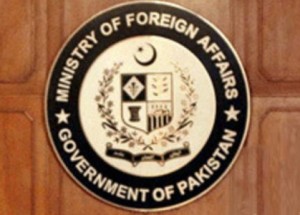Mohammad Jamil
On Saturday, the State Bank of Pakistan has announced new monetary policy for the next two months, whereby interest rate has been maintained at 5.75 per cent. While the Central Bank has been following a monetary policy of reducing interest rate for the last two years, its effects have not been reflected in the overall growth ranging from exports to the domestic economy. Exports have declined by 8.3%YoY to US $22bn in FY16 as compared to US$24bn in the previous year (FY15). While credit growth has witnessed expansion in FY16, initial months of FY17 have recorded significant retirement of private sector credit. State Bank stated that despite lower energy and commodity prices, inflation in the first two months was recorded at 3.8%, up from last full year average of 1.83%. However, the real inflation is more than double as compared with the figures provided by the SBP.
Since the government has decided not to enter into the next IMF program, analysts noticed significant slowdown and reversal in the reform processes like government borrowings, energy reforms, tax reforms, privatization and re-structuring of loss making public sector enterprises. On 1st August 2016, Finance Minister Ishaq Dar had claimed that Pakistan didn’t need support from International Monetary Fund (IMF) anymore. Despite decline in exports he was upbeat and presaged that by 2050 Pakistan will become the 18th biggest economic nation across the world. This appears to be a funniest statement, as Pakistan could not meet the targets of exports, trade deficit and current account deficit; remittances from expatriate Pakistanis have also declined, and with the decline in exports, current account deficit will increase. This will reduce the much-touted foreign exchange reserves, and the vicious cycle of taking more loans from the IMF will continue.
The government claims that GDP has increased from 2 per cent to more than 4 percent, but it is not reflected either in the realm of increase in job opportunities nor in exports. Evidence suggests that best of economic plans cannot succeed so long as human beings are treated as mere statistical numbers. The most serious aspect of our dire economic situation is the growing public debt, which on one hand limits the capacity to build strong defence and on the other limits fiscal space to invest in human development and infrastructure. The threats faced by Pakistan have to be understood in the light of fast changing regional and international situation, which add urgency to revive the economy so that adequate resources could be allocated to counter them. It is unfortunate that despite being a resourceful country, Pakistan has public debt of more than 65 per cent of the GDP, which includes a foreign debt of $65 billion.
The question is how Pakistan has piled up such a huge debt; and secondly how it would be able to manage when the payments of installment and interest on the additional loans would start. Our rulers had to follow the instructions of the IMF for increasing the rates of utilities and privatization of national assets to meet the shortfall in budget and balance of trade respectively; but that proved as recipe for disaster. It has to be mentioned that Direct Foreign Investment is also declining as compared with previous year. However, it should be borne in mind that with increase in portfolio investment in stock exchange by foreign investors, and the payment of dividends and profits on their investment in industry, the result would be a massive outflow of foreign exchange in future, and which is already taking the toll.





